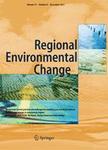版权所有:内蒙古大学图书馆 技术提供:维普资讯• 智图
内蒙古自治区呼和浩特市赛罕区大学西街235号 邮编: 010021

作者机构:Potsdam Inst Climate Impact Res D-14473 Potsdam Germany Brandenburg Tech Univ Cottbus D-03046 Cottbus Germany
出 版 物:《REGIONAL ENVIRONMENTAL CHANGE》 (地区性环境变化)
年 卷 期:2012年第12卷第3期
页 面:649-661页
核心收录:
学科分类:0830[工学-环境科学与工程(可授工学、理学、农学学位)] 08[工学]
基 金:German Federal Ministry for Education and Research (BMBF) project management agency at the German Aerospace Center (PT-DLR) [01 LW 0603 A2]
主 题:Bayesian uncertainty analysis Elbe River basin Error signature Error sources MCMC Metropolis algorithm Spatial calibration Spatially distributed hydrological modelling SWIM
摘 要:A global change assessment required detailed simulation of water availability in the Elbe River basin in Central Europe (148,268 kmA(2)). Using the spatially semi-distributed, eco-hydrological model SWIM, spatial calibration was applied. For 225 sub-areas covering the model domain (134,890 kmA(2)), evapotranspiration and groundwater dynamics were individually adjusted. The calibration aimed at good correspondences with long-term run-off contributions and the hydrographs for two extreme years. Measured run-off was revised from water management effects to produce quasi-natural discharges for calibration. At some gauges, there were large volume differences between these reference data and the simulations of the spatially uncalibrated model. Most affected were some sub-basins in the Czech part of the basin where the density of available climate stations was much lower than the German part. Thus, both erroneous precipitation data and systematic flaws in the evapotranspiration module of SWIM could have caused the differences. In order to identify the major error source and to validate the choice of spatial calibration parameters (evapotranspiration and groundwater dynamic corrections), MCMC analyses were made for three Czech areas. Optional precipitation correction had been considered by a third calibration parameter in the MCMC assessment. In two of the three cases, it can be shown that evapotranspiration corrections are preferable as precipitation errors are negligible. In the third case, where the analyses indicate a substantial error in precipitation data, an interpolation problem of the climate data at the edge of the model domain could be found. Hence, the applied method shows its potential to identify specific sources of uncertainty in hydrological modelling.